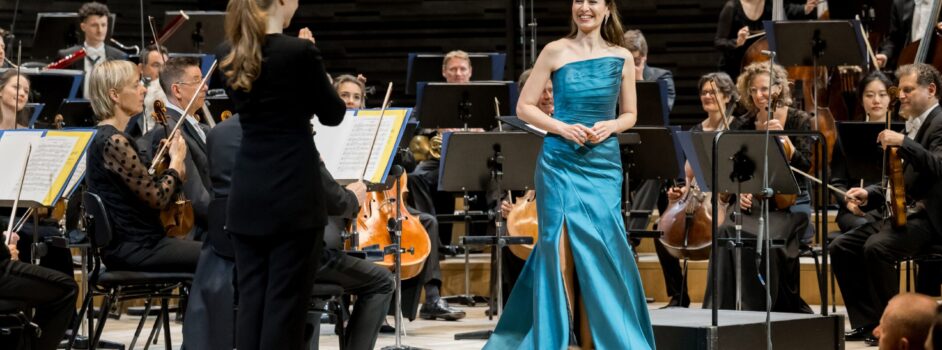Dima Slobodeniouk conducts the Helsinki Philharmonic in Prokofiev’s second symphony
Plus de détails
Helsinki. Helsinki Music Center. 30-X-2015. Jonathan Harvey (1939-2012): Tranquil Abiding; Johann Hummel (1778-1837): Trumpet Concerto; Sergei Prokofiev (1891-1953): Symphony No. 2, op. 40. Tine Thing Helseth: trumpet, Helsinki Philharmonic Orchestra, Dima Slobodeniouk: conductor.
 Dima Slobodeniouk's skillful direction and clear affinity for this music made this performance one of the major highlights of the current Helsinki concert season.
Dima Slobodeniouk's skillful direction and clear affinity for this music made this performance one of the major highlights of the current Helsinki concert season.
Dima Slobodeniouk is currently Music Director of the Orquestra Sinfónica de Galicia in Spain and a regular presence in the Helsinki orchestral scene. On this evening's performance, Slobodeniouk led the Helsinki Philharmonic in a program of Harvey, Hummel, and Prokofiev.
Opening the program was Jonathan Harvey's Tranquil Abiding, a work inspired by the composer's deep interest in Buddhism. True to its title, the music seemed to portray the mind as it approaches (or tries to approach) a meditative state: gentle, soothing waves from the orchestra's low register, followed by angular writing for upper strings, accompanied by dancing woodwinds. The music included some highly agitated passages, before settling into a state which alternated between trance-like and restless.
Johann Hummel's Trumpet Concerto was written in 1803, approximately seven years after the concerto for the same instrument by Joseph Haydn. Although Hummel's concerto might lack the same charm and grace as its more famous predecessor, Hummel nevertheless provided many delightful moments.
Tine Thing Helseth was the soloist in this performance. One of the most attractive aspects of her playing was her ability to phrase and shape the long melodic lines found in abundance throughout the work. Helseth brought an appropriate sense of restraint to the first two movements, before handling the virtuoso fireworks of the final movement with aplomb.
« Abrasive » and « steely » are adjectives which accurately describe many of Prokofiev's works, especially his rarely-performed Symphony No. 2. The work has a rather unique structure for a symphony–two movements consisting of an opening allegro followed by a theme and variations. The first movement is generally loud and clangorous, while the second movement alternates between tranquil beauty and bombast.
With significant demands placed on all sections of the orchestra, this work could be described as a concerto for orchestra. While the Helsinki Philharmonic performed brilliantly throughout, Dima Slobodeniouk's skillful direction and clear affinity for this music made this performance one of the major highlights of the current Helsinki concert season.
Slobodeniouk provided a steady hand through the work's densest sections, which gave transparency to Prokofiev's busy and often loud textures. While this performance appeared to soften some of the work's rough edges, Slobodeniouk's direction made Prokofiev's musical argument so clear and convincing that one could forgive the slight loss of visceral impact.
Bravo. Perhaps Maestro Slobodeniouk could be convinced to perform Prokofiev's Symphony No. 3 with these same forces sometime (very) soon?
Credit Photo Dima Slobodeniouk: Marco Borggreve
Plus de détails
Helsinki. Helsinki Music Center. 30-X-2015. Jonathan Harvey (1939-2012): Tranquil Abiding; Johann Hummel (1778-1837): Trumpet Concerto; Sergei Prokofiev (1891-1953): Symphony No. 2, op. 40. Tine Thing Helseth: trumpet, Helsinki Philharmonic Orchestra, Dima Slobodeniouk: conductor.






